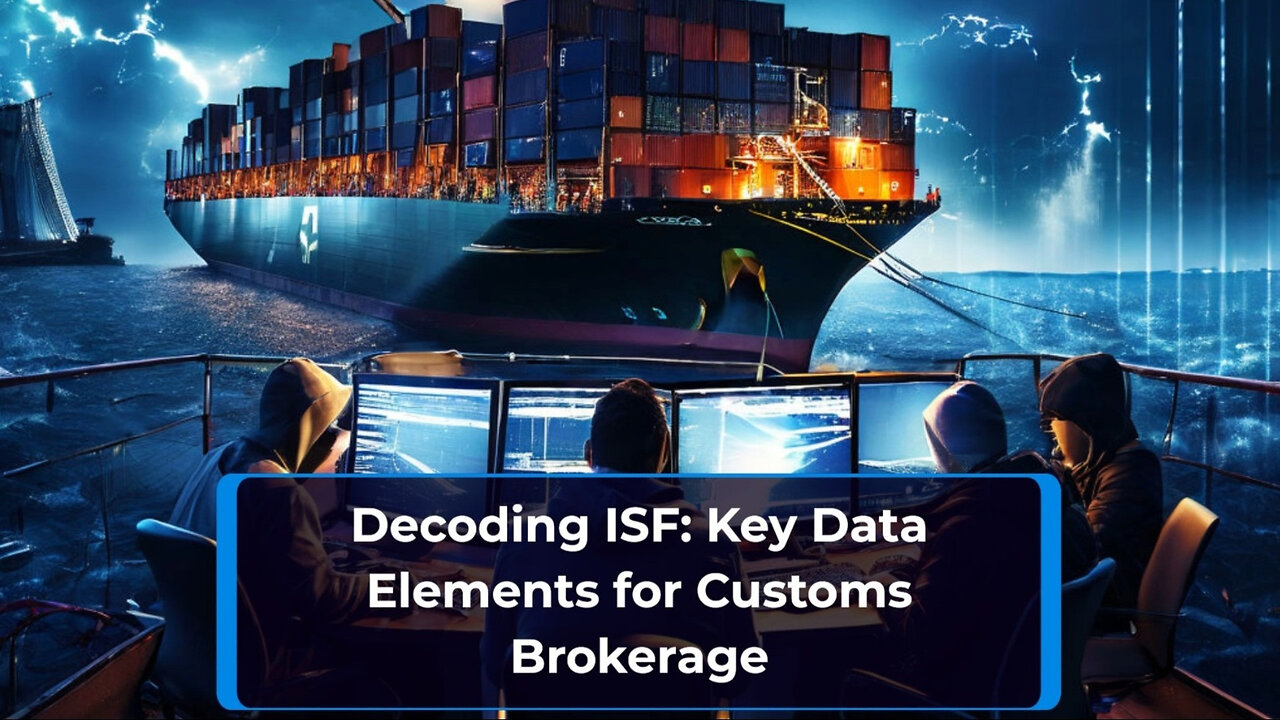Premium Only Content

Mastering Importer Security Filing: Key Data Elements and Why They Matter
ISF Checklist || 805-970-7918 || [email protected] || www.isfchecklist.com
In this Customs Brokerage Masterclass video, we take a deep dive into the key data elements of Importer Security Filing (ISF) and their significance in customs brokerage. ISF, also known as the 10+2 rule, is introduced by US Customs and Border Protection (CBP) to enhance cargo security and expedite the clearance process. The key data elements of ISF include buyer and seller information, manufacturer and supplier information, consolidation and container stuffing location, ship-to and ship-from information, container stuffing location, Harmonized System (HS) code, bill of lading number, foreign port of unlading, place of delivery, container freight station (CFS) information, importer of record (IOR) number, and consignee number. These data elements are vital for ensuring cargo security, facilitating customs clearance, accurate duty determination, and regulatory compliance. Having a customs bond is essential for the ISF filing process, providing financial security to CBP. Importers often partner with customs brokerage firms to ensure accurate ISF filings, compliance with customs regulations, and overall logistics management.
#usimportbond #isfcustomsbroker #uscustomsclearing #isfentry
Video Disclaimer Here: This video is purely educational and has no ties with the US government.
00:27 - Understanding Importer Security Filing (ISF)
00:56 - Key Data Elements of ISF
02:55 - Why Are These Data Elements Important?
03:40 - Customs Bond and ISF
04:22 - Partnering with a Customs Brokerage Firm
-
 LIVE
LIVE
TimcastIRL
1 hour agoCandace Owens Implies TPUSA KILLED Charlie Kirk, Claims Failed Bibi Deal Cost MILLIONS | Timcast IRL
21,927 watching -
 LIVE
LIVE
SpartakusLIVE
2 hours agoTrios w/ The BOYS on WZ and then we're teaching Jean ARC RAIDERS
354 watching -
 LIVE
LIVE
SOLTEKGG
43 minutes agoLIVE - NOT LOSING A MATCH - NEW PC - !pc
120 watching -
 1:32:46
1:32:46
Glenn Greenwald
3 hours agoHillary Blames TikTok for Anti-Israel Sentiment; MAGA Sycophants Gain Pentagon Press Access; Who Should Win Anti-Semite of the Year? See the Top 10 Finalists | SYSTEM UPDATE #552
73.3K48 -
 UPCOMING
UPCOMING
Flyover Conservatives
20 hours ago100% Chance the Grid Fails: Why No One Is Fixing It (and How Easy It Is) - Tommy Waller | FOC Show
5.14K1 -
 LIVE
LIVE
JDubGameN
1 hour agoStarlink Network Test Stream! | Road to 100 Followers
52 watching -
 2:17:31
2:17:31
The Daily Signal
4 hours ago $0.77 earned🚨BREAKING: Tennessee Congressional Election Results, Minneapolis Police to "Intervene" Against ICE,
6234 -
 LIVE
LIVE
megimu32
57 minutes agoON THE SUBJECT: Christmas Vacation Is UNTOUCHABLE!
131 watching -
 LIVE
LIVE
Sarah Westall
2 hours agoNeurostrike, Cognitive Targeting & the New Tech Arms Race w/ Professor Armin Krishnan
129 watching -
 2:52:28
2:52:28
Nikko Ortiz
3 hours agoNo More Gear Fear... | Rumble LIVE
1.4K1